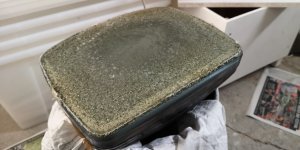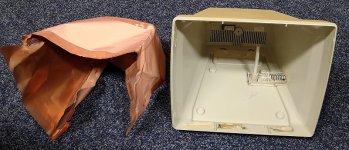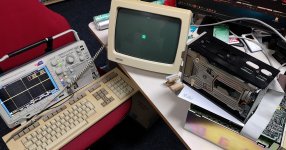DougIngraham
Veteran Member
I bought a VR201 off of EBay for my recently acquired DECmate II. When the monitor arrived it had a brown liquid around the seam at the front of the case. I can't tell what it is but I am not going to power it up until I have cleaned it out thoroughly. The whole thing reeks of cigarettes. The problem is I can't figure out how to take the cover off. There are two screws on the bottom which it appears to be a mistake to remove. They hold the leveling pin mechanism in place and when you remove them the leveling mechanism sort of falls into the case.
There appear to be the main part of the case and a part that attaches around the front holding the CRT in place. There are two slots on the left and right sides which look like they are for prying but if they are then stuff is stuck together inside and I am not willing to apply enough force to break something.
Is there a trick to getting these apart?
Thanks!
There appear to be the main part of the case and a part that attaches around the front holding the CRT in place. There are two slots on the left and right sides which look like they are for prying but if they are then stuff is stuck together inside and I am not willing to apply enough force to break something.
Is there a trick to getting these apart?
Thanks!





